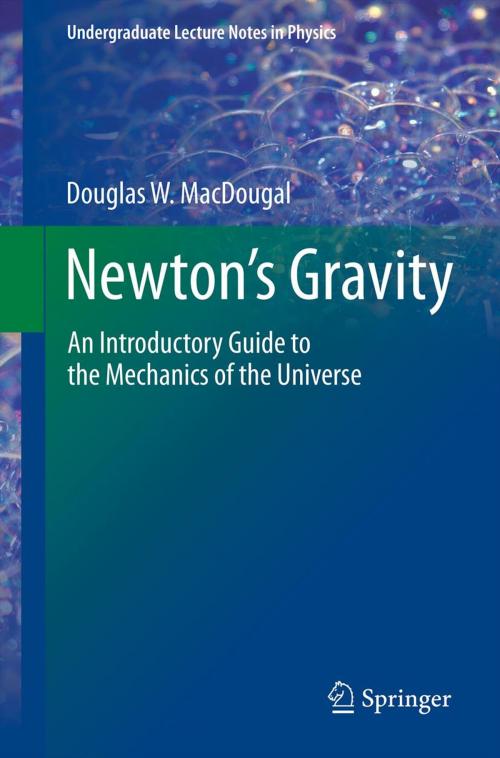Newton's Gravity
An Introductory Guide to the Mechanics of the Universe
Nonfiction, Science & Nature, Science, Earth Sciences, Geology, Physics, Astronomy| Author: | Douglas W. MacDougal | ISBN: | 9781461454441 |
| Publisher: | Springer New York | Publication: | December 16, 2012 |
| Imprint: | Springer | Language: | English |
| Author: | Douglas W. MacDougal |
| ISBN: | 9781461454441 |
| Publisher: | Springer New York |
| Publication: | December 16, 2012 |
| Imprint: | Springer |
| Language: | English |
“Newton’s Gravity” conveys the power of simple mathematics to tell the fundamental truth about nature. Many people, for example, know the tides are caused by the pull of the Moon and to a lesser extent the Sun. But very few can explain exactly how and why that happens. Fewer still can calculate the actual pulls of the Moon and Sun on the oceans. This book shows in clear detail how to do this with simple tools. It uniquely crosses disciplines – history, astronomy, physics and mathematics – and takes pains to explain things frequently passed over or taken for granted in other books. Using a problem-based approach, “Newton’s Gravity” explores the surprisingly basic mathematics behind gravity, the most fundamental force that governs the movements of satellites, planets, and the stars.
Author Douglas W. MacDougal uses actual problems from the history of astronomy, as well as original examples, to deepen understanding of how discoveries were made and what they mean. “Newton’s Gravity” concentrates strongly on the development of the science of orbital motion, beginning with Galileo, Kepler, and Newton, each of whom is prominently represented. Quotes and problems from Galileo’s Dialogs Concerning Two New Sciences and particularly Newton’s Principia help the reader get inside the mind of those thinkers and see the problems as they saw them, and experience their concise and typically eloquent writing.
This book enables students and curious minds to explore the mysteries of celestial motion without having to know advanced mathematics. It will whet the reader’s curiosity to explore further and provide him or her the tools (mathematical or physical) to do so.
“Newton’s Gravity” conveys the power of simple mathematics to tell the fundamental truth about nature. Many people, for example, know the tides are caused by the pull of the Moon and to a lesser extent the Sun. But very few can explain exactly how and why that happens. Fewer still can calculate the actual pulls of the Moon and Sun on the oceans. This book shows in clear detail how to do this with simple tools. It uniquely crosses disciplines – history, astronomy, physics and mathematics – and takes pains to explain things frequently passed over or taken for granted in other books. Using a problem-based approach, “Newton’s Gravity” explores the surprisingly basic mathematics behind gravity, the most fundamental force that governs the movements of satellites, planets, and the stars.
Author Douglas W. MacDougal uses actual problems from the history of astronomy, as well as original examples, to deepen understanding of how discoveries were made and what they mean. “Newton’s Gravity” concentrates strongly on the development of the science of orbital motion, beginning with Galileo, Kepler, and Newton, each of whom is prominently represented. Quotes and problems from Galileo’s Dialogs Concerning Two New Sciences and particularly Newton’s Principia help the reader get inside the mind of those thinkers and see the problems as they saw them, and experience their concise and typically eloquent writing.
This book enables students and curious minds to explore the mysteries of celestial motion without having to know advanced mathematics. It will whet the reader’s curiosity to explore further and provide him or her the tools (mathematical or physical) to do so.















